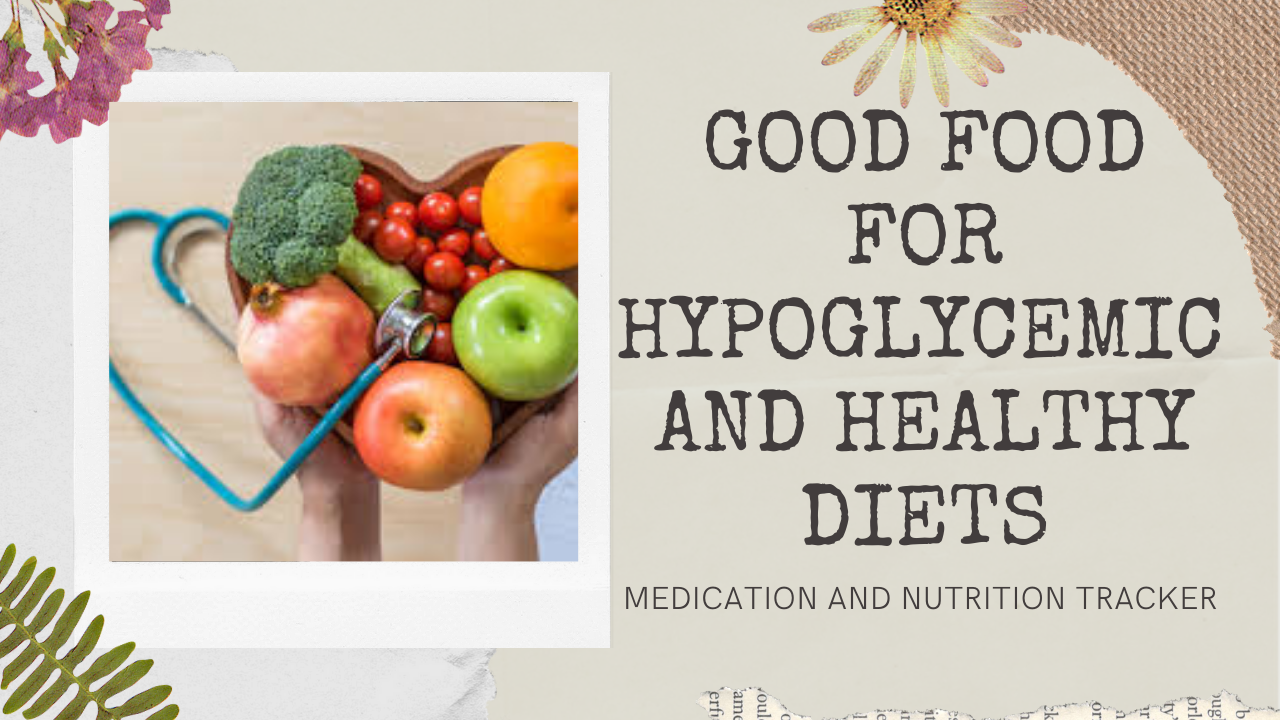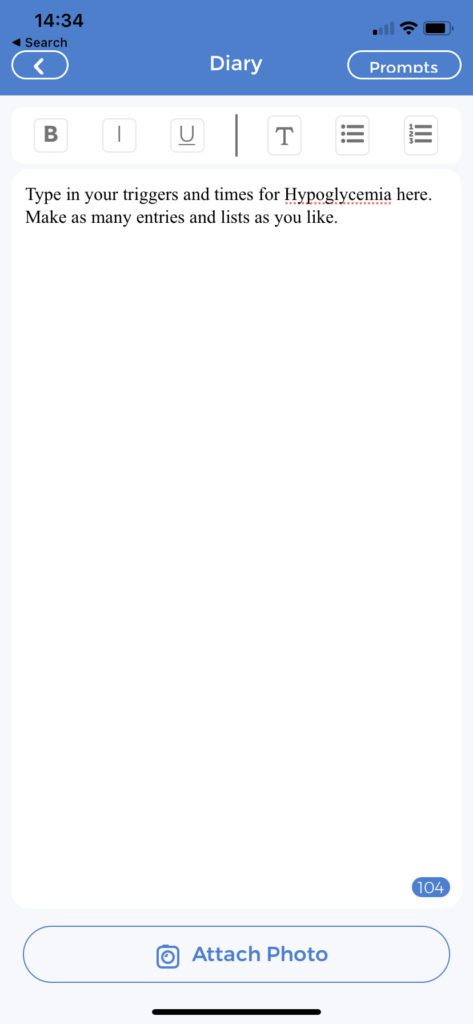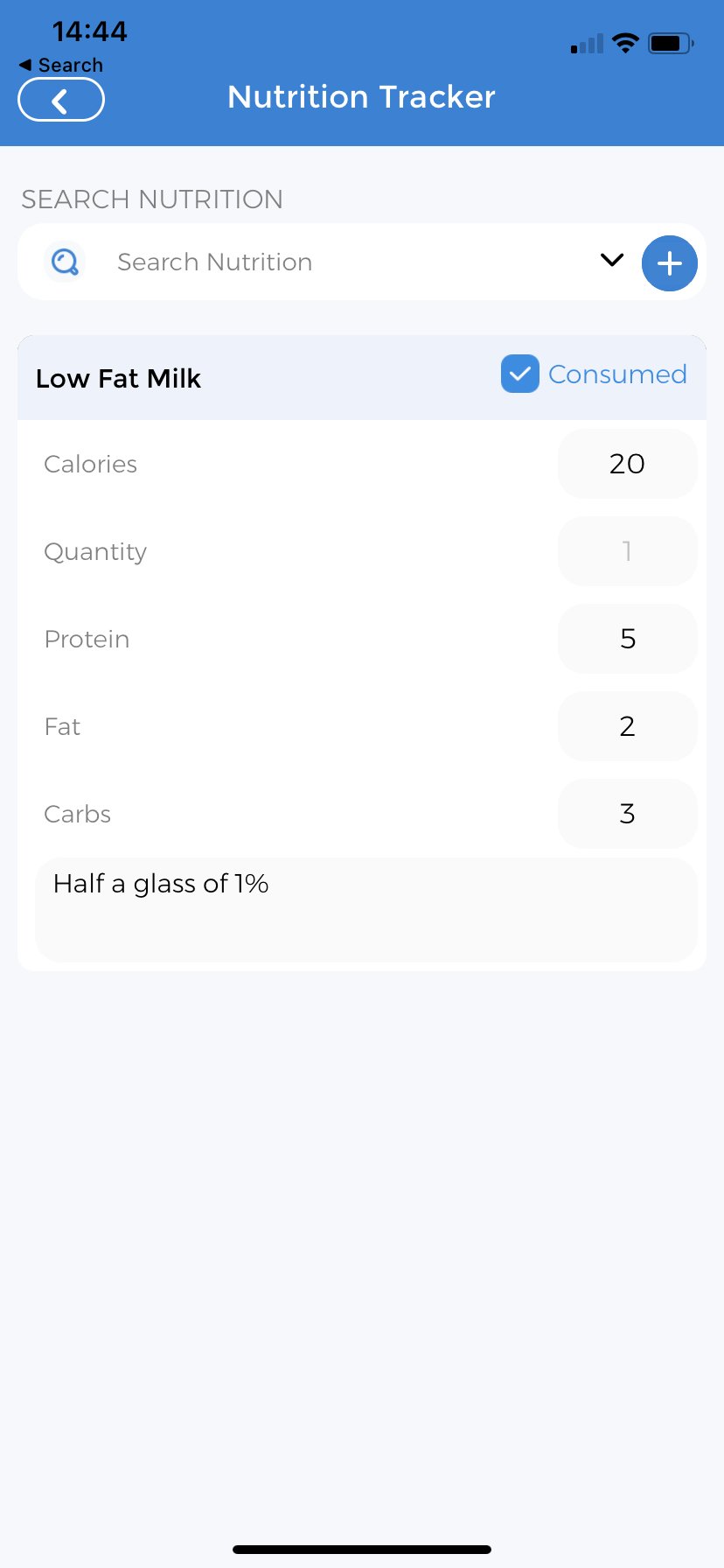
Are you tired from searching for a healthy diet to combat hypoglycemia? Do you struggle to find good food to eat with your hypoglycemic conditions? Is it difficult for you to track it in your daily activities? This article will give you a specific idea of things you can do in case you are experiencing hypoglycemia, and it will allow you to know what types of food or diet you should follow. As we know hypoglycemia is a lifelong condition, but you can help manage its symptoms through your diet. In addition, the article will talk about why CareClinic is the best app to use. Through this article, the CareClinic team hopes to enlighten you on the importance of blood sugar and the effects of hypoglycemia, how to measure your kidney function, the possible medical interventions for hypoglycemia, and the preventative actions you can take to ensure good health. With this information, this article will also go over how to use the CareClinic app to achieve and track your health by using it as a Symptom Log and Diary Log.
Table of Contents
- What is Hypoglycemia?
- What is Non-Diabetes Hypoglycemia?
- What can cause Hypoglycemia?
- What are some Common Symptoms of Hypoglycemia?
- How is Hypoglycemia Treated if you Lose Consciousness?
- Other Ways of Determining Hypoglycemia
- How can you Manage Hypoglycemia?
- Immediate Treatment of Hypoglycemia
- Immediate Treatment of Severe Hypoglycemia
- What Food is Good for you?
- Diet Tracking with CareClinic
- Creating a Meal Plan
- Hypoglycemia Treatments
What is Hypoglycemia?
Hypoglycemia is also known as low blood sugar, occurs when your blood sugar levels have fallen low enough that you need to take action to bring them back to your target range. This is usually when your blood sugar is less than 70 mg/dL. Hypoglycemia may be associated with symptoms such as anxiety, sweating, tremor, palpitations, nausea, etc. Left untreated, hyperglycemia can cause serious health problems including damage to your nerves, blood vessels, tissues, and organs. Learn more about ways to manage your hyperglycemia with diet.
What is Non-Diabetes Hypoglycemia?
Non-diabetic hypoglycemia, a rare condition, is low blood glucose in people who do not have diabetes. Clinicians usually want to confirm non-diabetic hypoglycemia by verifying classic symptoms along with a low sugar level AND these symptoms recover after eating sugar.
There are two kinds of non-diabetic hypoglycemia:
- Reactive hypoglycemia, which usually happens within a few hours of eating a meal.
- Fasting hypoglycemia, which may be related to a more serious condition.
Glucose is the main source of energy for your body and brain. It comes from what you eat and drink. Insulin is a hormone that helps keep blood glucose at normal levels so your body can work properly. His job is to help glucose enter your cells where it’s used for energy. And If your glucose level is too low, you might not feel well.
What can cause Hypoglycemia?
There are so many reasons why you can have low blood sugar, including:
- Drinking alcohol
- How much fat protein and fibre are in your meal?
- Hot and humid weather
- Taking too much insulin
- Not eating enough carbs for how much insulin you take
- Timing of when you take your insulin
- The amount and timing of physical activity
What are some Common Symptoms of Hypoglycemia?
When watching for signs of hypoglycemia, some of the most common symptoms to keep in mind are:
- Regular or fast heartbeat
- Fatigue
- Pale skin
- Anxiety
- Irritability
- Tingling or numbness of the lips, tongue, or cheek
- Shakiness
- Hunger
- Sweating
Among hypoglycemia symptoms and signs, you can also experience other symptoms like shortness of breath, dry mouth, blurred vision, dehydration, abdominal pain, vomiting, weight loss increased thirst, and frequent urination. For some patients, symptoms of hypoglycemia occur during fasting hypoglycemia. In others, symptoms of hypoglycemia occur after a meal which is reactive hypoglycemia.
Once you feel some of those symptoms you can diagnose if it is hypoglycemia or not. Generally, the first person to ask about any visible symptoms is the doctor. If the doctor suspects hypoglycemia, they may perform a blood test. Whenever the blood sugar levels are below 70 mg/dl that can indicate a case of hypoglycemia. However, everyone has a different base blood sugar level, and the measurement that determines hypoglycemia can vary.
How is Hypoglycemia Treated if you Lose Consciousness?
Severe blood sugar drops can cause you to pass out. This is more likely in people with type 1 diabetes but can also happen in people with type 2 diabetes treated with insulin. This can be life-threatening. It’s important to educate your family, friends, and even coworkers on how to administer a glucagon injection if you lose consciousness during a hypoglycemic episode. Glucagon is a hormone that stimulates the liver to break down stored glycogen into glucose. Talk to your doctor to see if you need a prescription for a glucagon emergency kit.
Other Ways of Determining Hypoglycemia
The doctor may use other tests to determine the underlying cause of low blood sugar. You always have to check and pay attention to your daily symptoms because if you don’t have signs and symptoms of hypoglycemia during your initial visit with your doctor, he or she might have you fast overnight or longer. This will allow low blood sugar symptoms to occur so that he or she can make a diagnosis. But if your symptoms occur after a meal, your doctor will want to test your glucose levels after you eat by drawing a sample of your blood to be analyzed in the laboratory.
How can you Manage Hypoglycemia?
People with type 1 or type 2 diabetes can manage or prevent hypoglycemia by:
- Managing stress
- Exercising
- Maintaining a healthy weight
- Taking oral medications
- Additionally, with the right dietary changes, you can sometimes keep hyperglycemia in check without medication. However, it’s critical to understand how to leverage the foods you eat to obtain the greatest benefit
Immediate Treatment of Hypoglycemia
If you are experiencing some symptoms related to hypoglycemia, here are some immediate treatments that can assist:
First, you can eat or drink 15 to 20 grams of fast-acting carbohydrates or carbs. They are sugar molecules or sugary foods without protein or fat that are easily converted to sugar in the body. Thus, you can always take some glucose tablets or gel, fruit juice, soft drinks, honey, and regular sugary candy.
Once you make sure to eat or drink to reinforce your blood sugar. You have to recheck your blood sugar levels 15 minutes after treatment. If blood sugar levels are still under 70 mg/dL (3.9 mmol/L), eat or drink another 15 to 20 grams of fast-acting carbohydrate, and recheck the blood sugar level in 15 minutes. Repeat these steps until the blood sugar is above 70 mg/dL (3.9 mmol/L). And once your blood sugar becomes normal again go ahead and eat a snack or meal that can help you stabilize it and replenish your body’s glycogen stores.
Immediate Treatment of Severe Hypoglycemia
Hypoglycemia becomes severe if you need help from someone to recover. For example, if you can’t eat, you might need a glucagon injection or intravenous glucose. In general, people with diabetes who are treated with insulin should have a glucagon kit for emergencies. Family and friends need to know where to find the kit and how to use it in case of emergency. If you’re helping someone allows you unconscious, don’t try to give the person food or drink. If there’s no glucagon kit available or you don’t know how to use it, call for emergency medical help.
What Food is Good for you?
Make your calories count with these nutritious foods. Choose healthy carbohydrates, fiber-rich foods, fish, and “good” fats.
Healthy Carbohydrates
During digestion, sugars (simple carbohydrates) and starches (complex carbohydrates) break down into blood glucose. Focus on healthy carbohydrates, such as:
- Fruits
- Vegetables
- Whole grains
- Legumes – such as beans and peas
- Low-fat dairy products – such as milk and cheese
- Avoid less healthy carbohydrates – such as foods or drinks with added fats, sugars, and sodium
Fiber-Rich Foods
Dietary fiber includes all parts of plant foods that your body can’t digest or absorb. Fiber moderates how your body digests and helps control blood sugar levels. Foods high in fiber include vegetables, fruits, nuts, legumes, such as beans and peas, and whole grains.
Heart-Healthy Fish
Eat heart-healthy fish at least twice a week. Fish such as salmon, mackerel, tuna, and sardines are rich in omega-3 fatty acids, which may prevent heart disease. Avoid fried fish and fish with high levels of mercury, such as king mackerel.
Understanding Good Fats
They are foods that contain monounsaturated and polyunsaturated fats that can help lower your cholesterol levels. They are also good for your heart, and your overall health. These fats can help you lower the risk of heart disease and stroke. They include Avocados, Nuts, Canola, olive, and peanut oils. But don’t overdo it, as all fats are high in calories.
It’s always important to see a doctor in case you’re experiencing any new sickness however if you don’t have time to go to the doctor or you want to check your daily medications, plan a ffffhealthy diet or know what kind of food is good for your conditions. CareClinic app is the best fit for you, it allows you to write down your daily symptoms and progress in the Diary entry in the app. You can also track your new symptom with the Symptom tracker.
Diet Tracking with CareClinic
CareClinic app is a one-stop health app that provides countless traits that help patients stay on track with their medical prescriptions, diets, physical activities, supplements, and therapies and to create self-care. The app comes with a daily check-in feature that includes medicine and supplements, symptoms tracker, measurements, nutrition tracker, activity tracker, sleep tracker, etc.
How to Keep Tracking Your Healthy Diet with CareClinic
To begin the journey, you can write down your symptoms, including when they started and how often they occur in the dairy entry along with some pictures of any physical signs. On the app there is an option where they ask you for your medicine and supplements, this is a medication tracker that will give you the possibility to add medication to your care plan which makes it easier whenever you want to do a check-in. Put all your key medical information, including other conditions for which you’re being treated, and the names of medications, vitamins, or other supplements you take, including doses.
Dairy Check-In on CareClinic
 You have to include all details about your recent diabetes management if you have diabetes. Add the timing and results of recent blood sugar tests, as well as the schedule on which you’ve been taking your medications if any. Don’t forget to list your typical daily habits, including alcohol intake, meals, and exercise routines in the diary.
You have to include all details about your recent diabetes management if you have diabetes. Add the timing and results of recent blood sugar tests, as well as the schedule on which you’ve been taking your medications if any. Don’t forget to list your typical daily habits, including alcohol intake, meals, and exercise routines in the diary.
Moreover, you have to note all recent changes to these habits, such as a new exercise routine, or a new job that’s changed the times you eat in the nutrition and the activity plan you found on the app. And don’t forget it will be to your advantage to follow your care plan by doing it with a family member or friend along, if possible. Someone who accompanies you can help you remember the information you’re given.
The diary check-in feature allows you to type up to 144 words per entry. There are options to “bold”, “italicize” or “underline” important words for future reference and add photos or pictures to each entry. The functionality of the actual diary is simple – type and save. The unique feature in the diary is the journal prompts button within the app.
Creating a Meal Plan
You may use a few different approaches to create a diabetes diet to help you keep your blood glucose level within a normal range. With the nutrition tracker you can add one or a combination of the following methods that work for you:
Nutrition Tracking
Whenever you are planning meals don’t forget to take into account your size and activity level. You can try the following menu by putting all the information in the nutrition tracker of the CareClinic app. The following menu is tailored for someone who needs 1,200 to 1,600 calories a day.
For breakfast it might be good for you to take one medium slice of whole-wheat bread, two teaspoons of jelly, 1/2 cup shredded wheat cereal with a cup of 1 percent low-fat milk, a piece of fruit, and a cup of coffee
For lunch, you can go for a roast beef sandwich on wheat bread with lettuce, low-fat American cheese, tomato, and mayonnaise, a medium apple, and a bottle of water
At dinner, always taking into consideration your diet you might want to try a piece of salmon, 1 1/2 teaspoons vegetable oil, small baked potato, 1/2 cup carrots, 1/2 cup green beans, medium white dinner roll, unsweetened iced tea, and a cup of milk. Last but not least for snacks you can eat 2 1/2 cups popcorn with 1 1/2 teaspoons margarine.
The Plate Method
The American Diabetes Association offers a simple method of meal planning. In essence, it focuses on eating more vegetables. Follow these steps when preparing your plate:
First, fill half of your plate with non-starchy vegetables, such as spinach, carrots and tomatoes, artichoke hearts, asparagus, baby corn, bamboo shoots, bean sprouts. Then fill a quarter of your plate with protein, such as tuna, lean pork, or chicken. And the last quarter with a whole-grain item, such as brown rice, or a starchy vegetable, such as green peas. Don’t forget to include “good” fats such as nuts or avocados in small amounts and to add a serving of fruit or dairy, a drink of water, or unsweetened tea or coffee.
Counting Carbohydrates
Because carbohydrates break down into glucose, they have the greatest impact on your blood glucose level. To help you control your blood sugar, you may need to learn how to calculate the number of carbohydrates you are eating so that you can adjust the dose of insulin accordingly. It’s important to keep track of the number of carbohydrates in each meal or snack. Thus, with the nutrition tracker on the CareClinic app as well as the medicine and supplements feature it would be easier for you to count the number of carbohydrates you eat for a day or a week. It will help you to pay attention to the serving size, the carbohydrate content and it helps you adjust your insulin dose accordingly in case you are taking insulin.
What Foods are Good for Hypoglycemia?
A dietitian may recommend you choose specific foods to help you plan meals and snacks. You can also find available doctors on the app that can help you set up a healthy meal plan. You can choose several foods from lists including categories such as carbohydrates, proteins, and fats.
One serving in a category is called a “choice.” A food choice has about the same amount of carbohydrates, protein, fat, and calories as a serving of every other food in that same category and the same effect on your blood glucose. For example, the starch, fruits, and milk list include
choices that are 12 to 15 grams of carbohydrates.
What are the Best Hypoglycemic Foods?
Some people who have diabetes select healthy foods, especially carbohydrates. This method ranks carbohydrate-containing foods based on their effect on blood glucose levels. Talk with your dietitian about whether this method might work for you.
However, if you are non-diabetic hypoglycemia, a certain diet can help keep blood sugar levels balanced. The following tips can help you to prevent hypoglycemia: Eat a small meal at least every 3 hours, rather than three large meals. Add a variety of foods, including protein, healthful fats, and fiber. One important thing to do is to avoid sugary foods. It’s essential to carry a snack to eat at the first sign of hypoglycemia can prevent blood sugar levels from dipping too low.
Ultimately, the best way to prevent hypoglycemia is to identify and treat the underlying cause.
Hypoglycemia Treatments
In summary, reactive hypoglycemia is a condition that causes low blood sugar within a four-hour window after meals. Eating food raises your blood sugar levels, but people who have hypoglycemia make more insulin than is needed when they eat. This excess insulin leads to a drop in their blood sugar level.
In this new generation where technology plays an important role in our life, there is many tools and application that can help you stay healthy and in good shape. By using an app that provides a nutrition tracker and medicine and supplements is a great example of it. In this case, the CareClinic app is your best friend in terms of keeping on track with your healthy diet for hypoglycemic. It also provides you with all the tools that you need to keep tracking your overall health too.
Download the CareClinic app today to begin this beautiful journey for yourself and your family.


